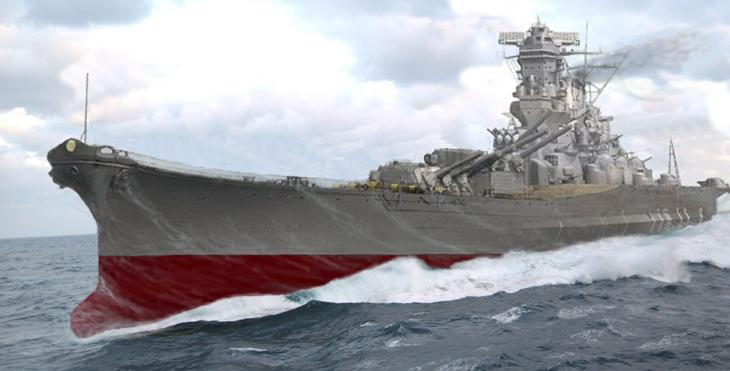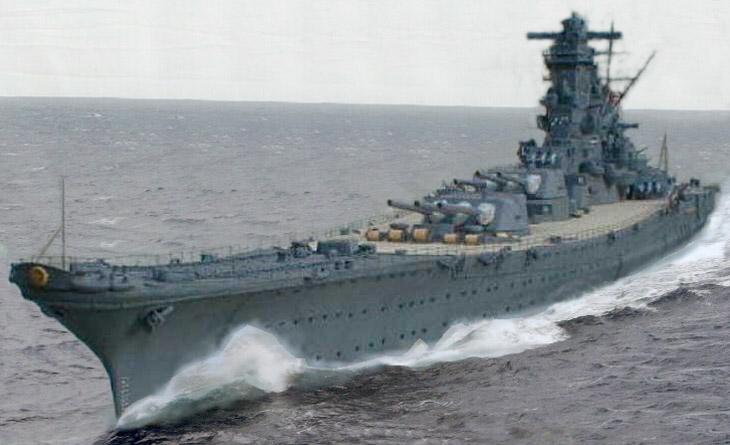|
|
 |
|
|
 |
BATTAGLIA NAVALE DI OKINAWA
NAVAL BATTLE OF OKINAWA
(7 APRILE 1945)
L'ULTIMO VIAGGIO DELLA YAMATO
THE LAST TRIP OF THE YAMATO BATTLESHIP
  |
GIUDIZIO FINALE DELLO SHINANO
La Battaglia di Okinawa è stata:
il "Canto del Cigno" della flotta imperiale giapponese;
l'ultimo atto bellico combattuto da una corazzata;
l'ultima battaglia navale della Seconda Guerra Mondiale.
Per questo motivo, pur non essendo stata decisiva come Midway o poderosa come Leyte assume un significato simbolico enorme nella storia delle battaglie navali. E' stata la definitiva dimostrazione della superiorità della forza aerea su quella navale. Come contrappasso ricorda gli attacchi decisivi giapponesi che affondarono il 10 dicembre 1941 al largo di Kuantan (Malesia) l'orgoglio della marina britannica, cioè la corazzata Prince of Walles e l'incrociatore da battaglia Repulse.
Da questo momento si era infatti capito che qualunque nave, anche la più corazzata e poderosa, non poteva durare a lungo se, priva di protezione aerea, veniva attaccata dall'aria. Questa consapevolezza di andare verso il massacro certo era ben conscia negli animi dei marinai e dei comandanti della flotta della Yamato e ben dimostra quanto lo spirito di sacrificio per la patria fosse radicato nell'animo nipponico.
Dal punto di vista tattico e strategico l'operazione non aveva alcun senso poiché la Yamato aveva il compito di diventare una postazione di artiglieria da spiaggia atta ad aiutare le truppe giapponesi che difendevano fino alla morte, metro per metro, il suolo di Okinawa. Solo la disperazione e la sensazione di impotenza che regnava tra gli alti comandi nipponici a metà del 1945 può spiegare questa missione.
La campagna di Okinawa, cui questa battaglia appartiene di diritto, fu la più sanguinosa e crudele di tutta la guerra del Pacifico. Dal 26 marzo al 21 giugno 1945 i giapponesi difesero con coraggio spinto fino al suicidio ogni metro quadrato di quest'isola causando ben 12.000 morti e 38.000 feriti tra gli americani, perdendo al contempo circa 100.000 uomini!
Sul piano navale i giapponesi affondarono, grazie ai kamikaze, ben 36 navi e ne misero fuori combattimento addirittura 368. Gli aerei perduti dagli americani ammontarono a 768. In mezzo a questa follia distruttiva il sacrificio della corazzata Yamato assume la forma del tentativo disperato di un popolo sconfitto che, conscio di essere ormai battutp, getta nella mischia la sua nave più gloriosa con il solo scopo di immolarla e farla entrare nella storia navale.
La Yamato era infatti, non solo la corazzata più grande e meglio armata di tutti i tempi, ma soprattutto era il simbolo e l'ammiraglia dell'intera marina giapponese. Lo stesso nome Yamato è quello che anticamente aveva il Giappone. Per questo motivo la sua epopea non potrà essere mai dimenticata da chi è sensibile alle vicende ed alla storia delle battaglie navali. (Shinano)
The Battle of Okinawa has been:
the "Song of the Swan" of the Japanese imperial fleet;
the last war action fought by a battleship;
the last naval battle of the Second World war.
For this motive, not having also been decisive as Midway or mighty as Leyte assumes an enormous symbolic meaning in the history of the naval battles.
And' is the definitive demonstration of the superiority of the aerial strength on that naval.
How retaliation remembers the Japanese decisive attacks that sank December 10 th 1941 offshore Kuantan (Malesia) the pride of the British harbor, that is the battleship Prince of Walles and the battle cruiser Repulse.
From this moment he was understood in fact that whatever ship, also the more battleship and mighty, you/he/she could not last for a long time if, deprived of aerial protection, you/he/she was attached by the air.
This awareness to go toward the certain massacre was well aware in the minds of the sailors and the commanders of the fleet of the Yamato and well it shows how much the spirit of sacrifice for the country was rooted in the mind nipponico.
From the tactical and strategic point of view the operation didn't have some sense since the Yamato had the assignment to become a posting of artillery from fit beach to help the Japanese troops that defended up to the death, meter for meter, the ground of Okinawa.
Only the desperation and the feeling of impotence that it reigned among the tall commands 1945 fifty-fifty nipponici you/he/she can explain this mission.
The country of Okinawa, which this battle belongs by law, was the bloodiest and cruel of the whole war of the Pacific.
From on March 26 to June 21 st 1945 the Japanese defended with inclined courage up to the suicide every square meter of this island causing well 12.000 corpses and 38.000 wounded among the Americans, losing to the meantime around 100.000 men!
On the naval plan the Japanese sank, thanks to the kamikaze, well 36 ships and they put even out fight of it 368.
The lost airplanes from the Americans amounted to 768.
In the middle of this destructive folly the sacrifice of the Yamato assumes the form of the desperate attempt of a people defeated that, aware of to be defeated by now, throw in the fray its more glorious ship with the solo purpose to immolate it and to make to enter her/it the naval history.
The Yamato was in fact, not only the greatest battleship and better armed with every time, but above all it was the symbol and the flagship of the whole Japanese harbor.
The same name Yamato is what anciently had Japan.
For this motive its epic can never be forgotten from who is sensitive to the stories and the history of the naval battles.
LE PIU' GRANDI BATTAGLIE NAVALI / NAVAL BATTLES
BATTAGLIA DI OKINAWA / NAVAL BATTLE OF OKINAWA
NAVI DA GUERRA / WARSHIPS AND BATTLESHIPS
PORTAEREI NELLA STORIA / AIRCRAFT CARRIERS